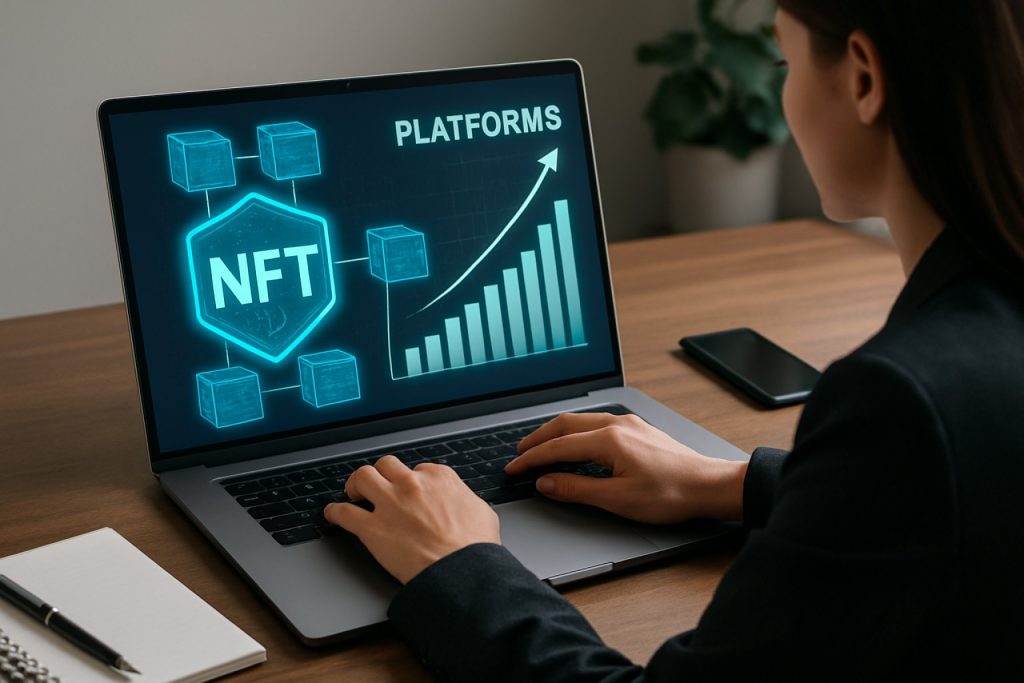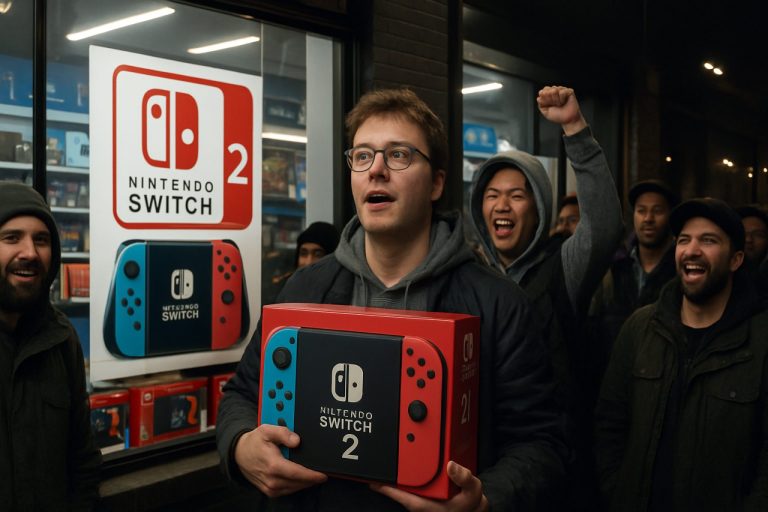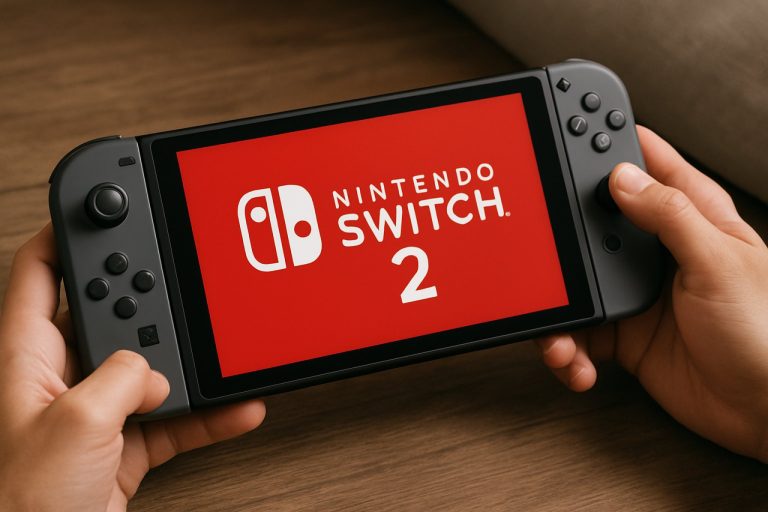
2025 Non-Fungible Token Fractionalization Platforms Market Report: Growth Drivers, Technology Innovations, and Strategic Insights for the Next 5 Years. Explore Key Trends, Forecasts, and Opportunities Shaping the NFT Fractionalization Landscape.
- Executive Summary & Market Overview
- Key Technology Trends in NFT Fractionalization Platforms
- Competitive Landscape and Leading Players
- Market Growth Forecasts (2025–2030): CAGR, Revenue, and Adoption Rates
- Regional Analysis: North America, Europe, Asia-Pacific, and Emerging Markets
- Challenges, Risks, and Regulatory Considerations
- Opportunities and Strategic Recommendations
- Future Outlook: Evolving Use Cases and Market Trajectories
- Sources & References
Executive Summary & Market Overview
Non-Fungible Token (NFT) fractionalization platforms are digital infrastructures that enable the division of ownership of unique digital assets—such as art, collectibles, and virtual real estate—into smaller, tradable fractions. This innovation addresses the liquidity and accessibility challenges inherent in the NFT market, allowing a broader range of investors to participate in high-value NFT ownership. As of 2025, the NFT fractionalization sector is experiencing robust growth, driven by increasing mainstream adoption of NFTs, the maturation of decentralized finance (DeFi) protocols, and the entry of institutional players.
The global NFT market surpassed $40 billion in sales in 2023, with projections indicating continued expansion as new use cases and platforms emerge Statista. Fractionalization platforms are capturing a growing share of this market by democratizing access and enhancing liquidity. Leading platforms such as NFTfi, Fractional (now Tessera), and Unic.ly have facilitated millions of dollars in fractional NFT transactions, attracting both retail and institutional investors.
Key market drivers in 2025 include the proliferation of high-value NFT assets, the integration of fractionalized NFTs into DeFi ecosystems, and regulatory clarity in major jurisdictions. The ability to use fractionalized NFTs as collateral for loans, participate in liquidity pools, and access secondary markets has significantly increased the utility and appeal of these platforms McKinsey & Company. Additionally, partnerships between NFT platforms and traditional art institutions are expanding the reach of fractionalized ownership to new demographics.
However, the market faces challenges, including evolving regulatory frameworks, intellectual property concerns, and the need for robust security protocols. Regulatory bodies such as the U.S. Securities and Exchange Commission are increasingly scrutinizing NFT fractionalization models to determine their compliance with securities laws, which could impact platform operations and investor participation.
In summary, NFT fractionalization platforms are reshaping digital asset ownership in 2025 by lowering entry barriers, enhancing liquidity, and fostering innovation. The sector is poised for continued growth, contingent on regulatory developments and the ongoing evolution of NFT and DeFi ecosystems.
Key Technology Trends in NFT Fractionalization Platforms
Non-Fungible Token (NFT) fractionalization platforms are rapidly evolving, driven by technological advancements that enhance accessibility, liquidity, and security for digital asset ownership. In 2025, several key technology trends are shaping the landscape of NFT fractionalization:
- Layer-2 Scaling Solutions: To address high transaction fees and network congestion on major blockchains like Ethereum, NFT fractionalization platforms are increasingly integrating Layer-2 solutions such as Optimistic Rollups and zk-Rollups. These technologies enable faster and more cost-effective transactions, making fractional ownership more accessible to a broader user base. Platforms like Polygon and Arbitrum are at the forefront of this trend, providing scalable infrastructure for NFT projects.
- Interoperability Protocols: Cross-chain interoperability is becoming essential as NFT assets and their fractions are minted and traded across multiple blockchains. Protocols such as Polkadot and Cosmos facilitate seamless movement of fractionalized NFTs between ecosystems, enhancing liquidity and user choice.
- Decentralized Autonomous Organizations (DAOs): Governance of fractionalized NFTs is increasingly managed through DAOs, allowing collective decision-making on asset management, sales, and royalties. Platforms like Fractional and PartyBid are leveraging DAO frameworks to democratize control and revenue distribution among token holders.
- Enhanced Smart Contract Security: As the value of fractionalized NFTs grows, so does the need for robust smart contract security. Auditing firms such as ConsenSys Diligence and CertiK are providing advanced auditing services, while platforms are adopting formal verification methods to minimize vulnerabilities and protect user assets.
- Integration of Real-World Assets: NFT fractionalization is expanding beyond digital art to include real-world assets such as real estate, collectibles, and intellectual property. Platforms like Realio and Propy are pioneering tokenization frameworks that bridge physical and digital ownership, broadening the market for fractionalized NFTs.
These technology trends are collectively driving the maturation of NFT fractionalization platforms, fostering greater inclusivity, efficiency, and trust in the digital asset ecosystem as the market heads into 2025.
Competitive Landscape and Leading Players
The competitive landscape for Non-Fungible Token (NFT) fractionalization platforms in 2025 is characterized by rapid innovation, increasing institutional interest, and a growing number of specialized service providers. NFT fractionalization platforms enable users to divide ownership of high-value NFTs into smaller, tradable fractions, thereby enhancing liquidity and democratizing access to digital assets. This segment has attracted both established blockchain companies and new entrants, each vying for market share through technological differentiation, regulatory compliance, and strategic partnerships.
Leading players in this space include NFTfi, Fractional (now rebranded as Tessera), and Unic.ly. NFTfi has leveraged its early-mover advantage by integrating lending and borrowing functionalities, allowing users to collateralize fractionalized NFTs. Tessera has focused on user experience and community governance, introducing innovative DAO structures to manage fractionalized assets. Unic.ly differentiates itself through its unique liquidity pool mechanisms and support for a wide range of NFT standards.
In 2025, the market is also witnessing the entry of traditional financial institutions and major crypto exchanges. For example, Binance and Coinbase have announced pilot programs for NFT fractionalization, leveraging their large user bases and regulatory expertise to attract mainstream investors. These moves are expected to intensify competition and drive further innovation in compliance and security protocols.
Strategic partnerships are a key trend, with platforms collaborating with NFT creators, gaming companies, and metaverse projects to offer exclusive fractionalized assets. For instance, Tessera has partnered with leading digital artists and DAOs to launch high-profile NFT collections, while NFTfi has integrated with DeFi protocols to expand its lending ecosystem.
- Market consolidation is anticipated as larger players acquire niche platforms to expand their offerings and user base.
- Regulatory clarity, especially in the US and EU, is shaping platform operations, with compliance becoming a competitive differentiator.
- Interoperability and cross-chain functionality are emerging as critical features, with platforms like Unic.ly investing in multi-chain support.
Overall, the NFT fractionalization platform market in 2025 is marked by dynamic competition, technological advancement, and increasing institutional participation, setting the stage for further growth and mainstream adoption.
Market Growth Forecasts (2025–2030): CAGR, Revenue, and Adoption Rates
The market for Non-Fungible Token (NFT) fractionalization platforms is projected to experience robust growth between 2025 and 2030, driven by increasing demand for liquidity, democratized ownership, and innovative investment models in the digital asset space. According to recent industry analyses, the global NFT fractionalization platform market is expected to register a compound annual growth rate (CAGR) of approximately 22% during this period, with total market revenues forecasted to surpass $1.2 billion by 2030, up from an estimated $330 million in 2025 Grand View Research.
Adoption rates are anticipated to accelerate as both retail and institutional investors seek exposure to high-value NFTs—such as digital art, collectibles, and virtual real estate—without the need for full ownership. The proliferation of user-friendly platforms and regulatory clarity in key markets are expected to further catalyze adoption. By 2027, it is estimated that over 15% of all NFT transactions will involve fractionalized assets, compared to less than 5% in 2024 Gartner.
- Revenue Growth: The market’s revenue trajectory is underpinned by transaction fees, platform commissions, and value-added services such as custody and compliance. Leading platforms are expected to diversify revenue streams by integrating DeFi lending, NFT staking, and secondary trading functionalities McKinsey & Company.
- Regional Trends: North America and Asia-Pacific are projected to dominate market share, with Europe following closely. The Asia-Pacific region, in particular, is forecasted to exhibit the fastest CAGR, driven by a tech-savvy population and rapid digital asset adoption Statista.
- Adoption Drivers: Key factors fueling adoption include enhanced liquidity for illiquid NFT assets, lower entry barriers for retail investors, and the emergence of regulatory frameworks that support fractional ownership models.
Overall, the 2025–2030 period is set to witness significant expansion in NFT fractionalization platforms, with market participants focusing on scalability, security, and compliance to capture a growing and increasingly diverse user base.
Regional Analysis: North America, Europe, Asia-Pacific, and Emerging Markets
The regional landscape for Non-Fungible Token (NFT) fractionalization platforms in 2025 is shaped by varying levels of digital asset adoption, regulatory clarity, and investment appetite across North America, Europe, Asia-Pacific, and emerging markets.
North America remains the global leader in NFT fractionalization, driven by a mature blockchain ecosystem and robust venture capital activity. The United States, in particular, benefits from a concentration of leading platforms and a tech-savvy investor base. Regulatory developments, such as the SEC’s evolving stance on digital assets, continue to influence platform innovation and user participation. Canada also shows strong growth, leveraging its progressive fintech regulations and active crypto community. According to Statista, North America accounted for over 35% of global NFT platform revenues in 2024, a trend expected to persist into 2025.
- Key Players: OpenSea, Nifty Gateway, and Rally are prominent in NFT fractionalization, offering diverse asset classes and liquidity solutions.
Europe is characterized by a rapidly evolving regulatory environment, with the Markets in Crypto-Assets (MiCA) regulation set to provide greater legal certainty for NFT platforms. The region’s focus on compliance and consumer protection is attracting institutional interest, particularly in Germany, France, and the UK. European platforms are increasingly collaborating with traditional art institutions and luxury brands to fractionalize high-value assets. European Blockchain Observatory and Forum reports a 28% year-on-year increase in NFT-related startups in 2024, signaling robust growth for 2025.
Asia-Pacific is emerging as a powerhouse, fueled by high mobile penetration, a vibrant gaming sector, and strong government support for blockchain innovation. China’s regulatory restrictions have shifted activity to markets like Singapore, South Korea, and Japan, where regulatory sandboxes and tax incentives foster experimentation. Mordor Intelligence projects Asia-Pacific to achieve the fastest CAGR in NFT fractionalization platforms through 2025, driven by retail and institutional adoption.
Emerging Markets in Latin America, Africa, and the Middle East are leveraging NFT fractionalization to democratize access to art, real estate, and collectibles. While infrastructure and regulatory challenges persist, platforms are innovating with mobile-first solutions and local partnerships. Chainalysis highlights a 40% increase in NFT transaction volumes in these regions in 2024, indicating rising engagement and untapped potential for 2025.
Challenges, Risks, and Regulatory Considerations
Non-fungible token (NFT) fractionalization platforms, which enable the division of NFT ownership into smaller, tradable fractions, face a complex landscape of challenges, risks, and regulatory considerations as the market matures in 2025. The primary challenge lies in the legal ambiguity surrounding the classification of fractionalized NFTs. Regulators in major jurisdictions, including the U.S. Securities and Exchange Commission (U.S. Securities and Exchange Commission), have signaled that fractionalized NFTs may be considered securities, subjecting platforms to stringent compliance requirements under securities laws. This uncertainty has led to increased scrutiny and, in some cases, enforcement actions against platforms that fail to register or comply with investor protection rules.
Operational risks are also significant. Smart contract vulnerabilities remain a persistent threat, as demonstrated by several high-profile exploits in the decentralized finance (DeFi) sector. Fractionalization platforms must invest heavily in security audits and ongoing monitoring to mitigate the risk of hacks or manipulation, which could result in substantial financial losses for users and reputational damage for the platform operators (Chainalysis).
Market risks are amplified by the illiquidity and volatility inherent in NFT markets. The value of fractionalized tokens is closely tied to the underlying NFT, which can experience dramatic price swings or become illiquid if market interest wanes. This exposes investors to heightened risk, especially those who may not fully understand the speculative nature of NFT assets (Nasdaq).
Another challenge is ensuring transparent and fair governance. Disputes over the management, sale, or curation of the underlying NFT can arise among fractional owners, necessitating robust governance frameworks and clear smart contract logic. Without these, platforms risk legal disputes and loss of user trust.
Finally, anti-money laundering (AML) and know-your-customer (KYC) compliance are increasingly important as regulators crack down on illicit activity in the digital asset space. Platforms must implement effective AML/KYC procedures to prevent their services from being used for money laundering or terrorist financing, as highlighted by recent guidance from the Financial Action Task Force (FATF).
In summary, while NFT fractionalization platforms offer innovative investment opportunities, they must navigate a rapidly evolving regulatory environment, address significant operational and market risks, and implement robust compliance measures to ensure long-term viability and user protection in 2025.
Opportunities and Strategic Recommendations
The market for Non-Fungible Token (NFT) fractionalization platforms is poised for significant growth in 2025, driven by increasing demand for liquidity, accessibility, and democratization of high-value digital assets. As NFTs representing art, collectibles, real estate, and intellectual property continue to command high prices, fractionalization platforms offer a compelling solution by enabling shared ownership and lowering entry barriers for retail investors.
Opportunities:
- Expanding Asset Classes: Beyond digital art, there is a growing opportunity to fractionalize NFTs tied to real-world assets such as real estate, luxury goods, and music royalties. This diversification can attract a broader investor base and create new revenue streams for platforms (Deloitte).
- Institutional Adoption: As regulatory clarity improves, institutional investors are expected to enter the NFT space, seeking exposure through compliant fractionalization platforms. This could drive significant capital inflows and enhance platform credibility (PwC).
- Secondary Market Liquidity: Fractionalization enables the creation of liquid secondary markets for NFT shares, increasing trading volumes and platform engagement. Enhanced liquidity can also lead to more accurate price discovery and valuation of underlying assets (Chainalysis).
- Global Reach and Inclusion: By lowering investment thresholds, platforms can tap into emerging markets and underbanked populations, fostering greater financial inclusion and global participation in the NFT ecosystem (World Bank).
Strategic Recommendations:
- Focus on Compliance: Proactively engage with regulators to ensure platforms meet evolving legal requirements, particularly around securities laws and anti-money laundering (AML) standards. This will be critical for attracting institutional partners and maintaining user trust.
- Enhance User Experience: Invest in intuitive interfaces, robust educational resources, and seamless onboarding processes to attract and retain non-crypto-native users.
- Partnerships and Ecosystem Development: Collaborate with NFT creators, marketplaces, and DeFi protocols to expand asset offerings and integrate value-added services such as lending, staking, and insurance.
- Security and Transparency: Prioritize smart contract audits, transparent governance, and clear communication of risks to build long-term credibility and mitigate potential platform vulnerabilities.
Future Outlook: Evolving Use Cases and Market Trajectories
The future outlook for Non-Fungible Token (NFT) fractionalization platforms in 2025 is shaped by evolving use cases and dynamic market trajectories. As the NFT market matures, fractionalization—dividing ownership of high-value NFTs into smaller, tradable fractions—continues to unlock liquidity and democratize access to digital assets. This trend is expected to accelerate, driven by both technological advancements and shifting investor preferences.
In 2025, NFT fractionalization platforms are anticipated to expand beyond art and collectibles into new verticals such as real estate, intellectual property, and gaming assets. For instance, tokenizing real-world assets like property or music royalties and offering fractional ownership can lower entry barriers for retail investors and create new revenue streams for asset owners. Platforms are also likely to integrate with decentralized finance (DeFi) protocols, enabling users to leverage fractionalized NFTs as collateral for loans or participate in yield-generating activities, further enhancing utility and liquidity in the ecosystem (Deloitte).
Regulatory clarity is expected to play a pivotal role in shaping the market trajectory. Jurisdictions that provide clear guidelines for fractionalized NFTs—especially regarding securities laws and investor protections—will likely see faster adoption and innovation. The U.S. Securities and Exchange Commission (SEC) and the European Union are both actively exploring frameworks that could impact how these platforms operate and scale (U.S. Securities and Exchange Commission; European Parliament).
- Interoperability: Cross-chain solutions are expected to become standard, allowing fractionalized NFTs to move seamlessly across different blockchains, thereby increasing market depth and user participation.
- Institutional Adoption: As platforms mature, institutional investors are projected to enter the space, attracted by fractionalized blue-chip NFTs and tokenized real-world assets, which could drive significant capital inflows (Bain & Company).
- Enhanced User Experience: User interfaces and onboarding processes are likely to improve, reducing friction for non-crypto-native participants and supporting mainstream adoption.
Overall, the market for NFT fractionalization platforms in 2025 is poised for robust growth, with new use cases, regulatory developments, and technological innovations collectively shaping a more accessible and liquid digital asset landscape.
Sources & References
- Statista
- NFTfi
- McKinsey & Company
- Polygon
- Arbitrum
- Cosmos
- PartyBid
- ConsenSys Diligence
- CertiK
- Realio
- Propy
- Binance
- Grand View Research
- Nifty Gateway
- Rally
- Mordor Intelligence
- Chainalysis
- Deloitte
- PwC
- World Bank
- European Parliament
- Bain & Company



